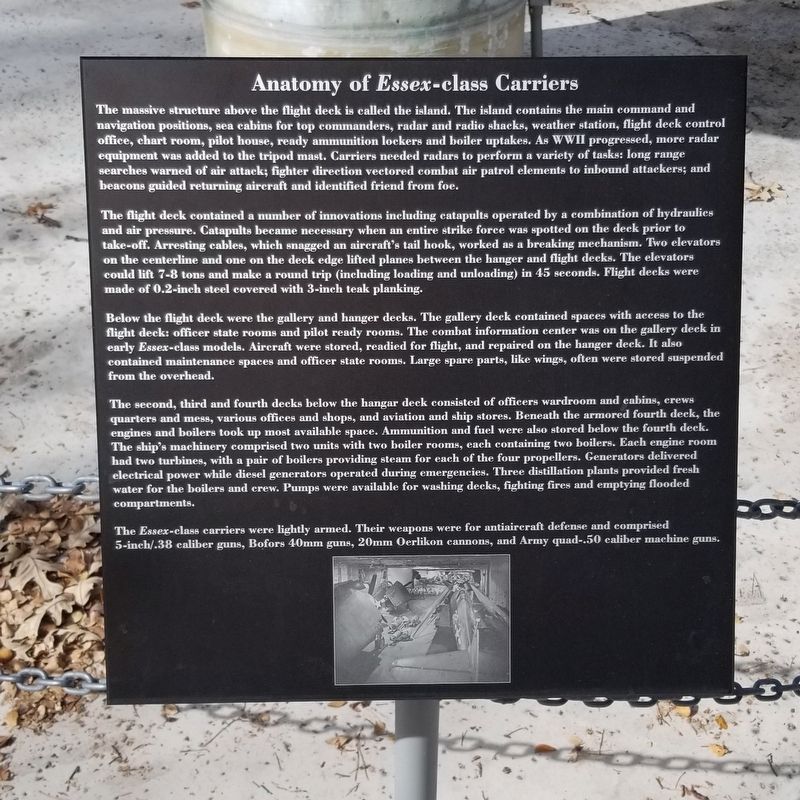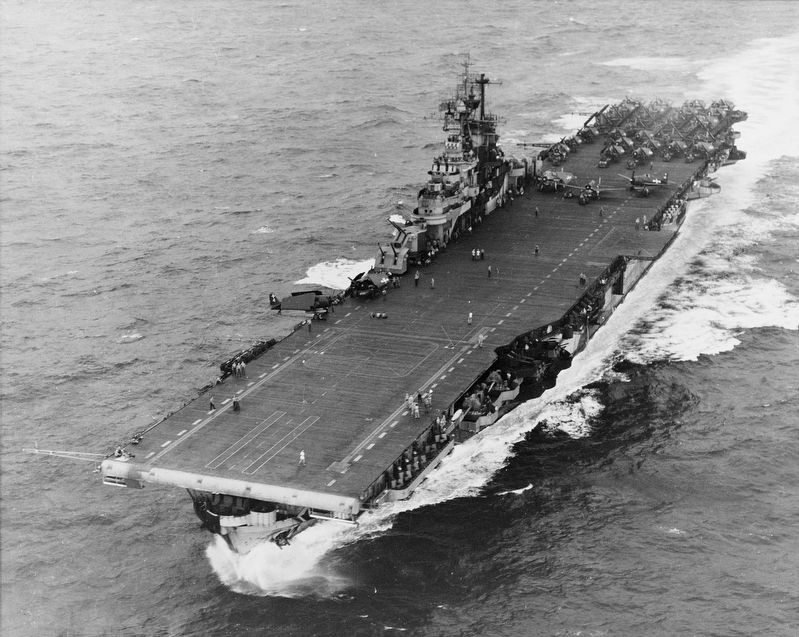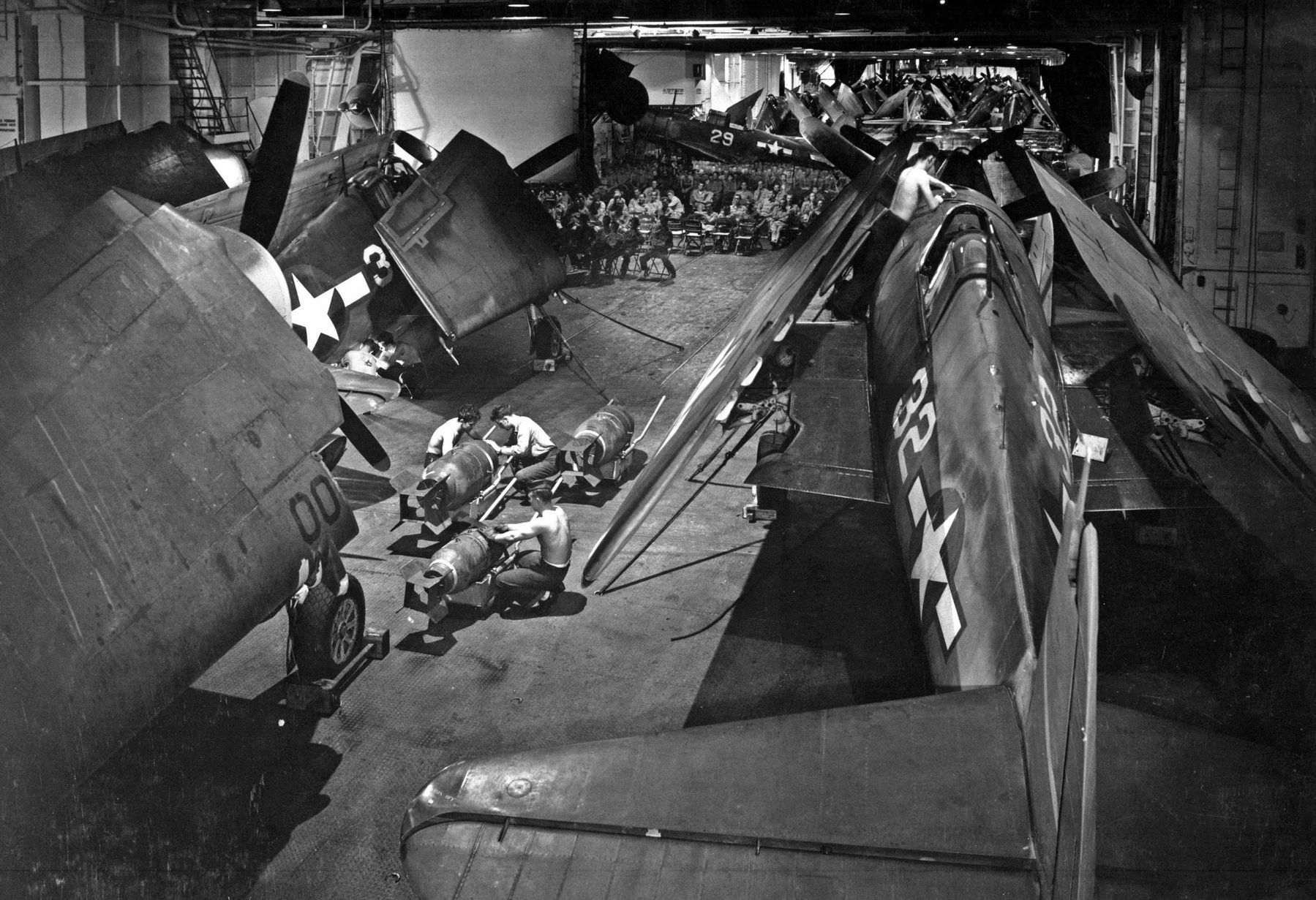Fredericksburg in Gillespie County, Texas — The American South (West South Central)
Anatomy of Essex-class Carriers
The flight deck contained a number of innovations including catapults operated by a combination of hydraulics and air pressure. Catapults became necessary when an entire strike force was spotted on the deck prior to take-off. Arresting cables, which snagged an aircraft's tail hook, worked as a breaking mechanism. Two elevators on the centerline and one on the deck edge lifted planes between the hanger and flight decks. The elevators could lift 7-8 tons and make a round trip (including loading and unloading) in 45 seconds. Flight decks were made of 0.2-inch steel covered with 3-inch teak planking.
Below the flight deck were the gallery and hanger decks. The gallery deck contained spaces with access to the flight deck: officer state rooms and pilot ready rooms. The combat information center was on the gallery deck in early Essex-class models. Aircraft were stored, readied for flight, and repaired on the hanger deck. It also contained maintenance spaces and officer state rooms. Large spare parts, like wings, often were stored suspended from the overhead.
The second, third and fourth decks below the hangar deck consisted of officers wardroom and cabins, crews quarters and mess, various offices and shops, and aviation and ship stores. Beneath the armored fourth deck, the engines and boilers took up most available space. Ammunition and fuel were also stored below the fourth deck. The ship's machinery comprised two units with two boiler rooms, each containing two boilers. Each engine room had two turbines, with a pair of boilers providing steam for each of the four propellers. Generators delivered electrical power while diesel generators operated during emergencies. Three distillation plants provided fresh water for the boilers and crew. Pumps were available for washing decks, fighting fires and emptying flooded compartments.
The Essex-class carriers were lightly armed. Their weapons were for antiaircraft defense and comprised 5-inch/.38 caliber guns, Bofors 40mm guns, 20mm Oerlikon cannons, and Army quad-.50 caliber machine guns.
Erected by
National Museum of the Pacific War.
Topics. This historical marker is listed in this topic list: War, World II.
Location. 30° 16.359′ N, 98° 52.007′ W. Marker is in Fredericksburg, Texas, in Gillespie County. Marker can be reached from the intersection of East Austin Street and North Washington Street. The marker is located in the northeastern section of the WWII Veterans Memorial Courtyard which is a part of the National Museum of the Pacific War. Touch for map. Marker is at or near this postal address: 311 East Austin Street, Fredericksburg TX 78624, United States of America. Touch for directions.
Other nearby markers. At least 8 other markers are within walking distance of this marker. Aircraft Carrier Doctrine (here, next to this marker); Essex-class Carriers Combat Chronicle in World War II (here, next to this marker); Navy Nurses (a few steps from this marker); USS Cabot (a few steps from this marker); Rear Admiral Walter N. "Buck" Dietzen Jr. (a few steps from this marker); USS Oklahoma City (a few steps from this marker); U.S.S. Clinton (a few steps from this marker); USS Oklahoma City CL-91 (a few steps from this marker). Touch for a list and map of all markers in Fredericksburg.
Also see . . . Essex-class Carriers.
The Essex class was a class of aircraft carriers of the United States Navy. The 20th century's most numerous class of capital ship, the class consisted of 24 vessels, which came in "short-hull" and "long-hull" versions. Thirty-two ships were ordered, but as World War II wound down, six were canceled before construction, and two were canceled after construction had begun. Fourteen ships of the class engaged in combat operations during World War II. No Essex-class ships were lost to enemy action even though several sustained crippling damage. Source: Wikipedia(Submitted on April 25, 2022, by James Hulse of Medina, Texas.)
Credits. This page was last revised on April 25, 2022. It was originally submitted on April 25, 2022, by James Hulse of Medina, Texas. This page has been viewed 642 times since then and 106 times this year. Photos: 1, 2, 3, 4. submitted on April 25, 2022, by James Hulse of Medina, Texas.



